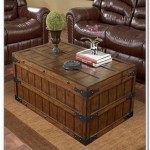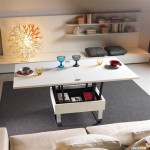What Causes A Glass Table To Shatter In The Middle Of Night
The sudden, unexpected shattering of a glass table in the dead of night can be a startling and unsettling experience. While it may seem like an inexplicable event, a combination of factors often contributes to this phenomenon. Understanding these factors can provide insight into the fragility of glass and the conditions that can lead to its catastrophic failure.
Glass, despite its apparent solidity, is a material that is susceptible to a variety of stresses. These stresses can accumulate over time, weakening the glass and making it more vulnerable to breakage. The environmental conditions and inherent manufacturing imperfections amplify these internal stresses. When these factors combine, they can create a perfect storm that results in the glass table shattering without any apparent external force.
Internal Stress and Manufacturing Imperfections
One of the primary contributors to glass table shattering is internal stress. During the manufacturing process, glass is subjected to high temperatures and then cooled rapidly. This rapid cooling can create a temperature differential between the surface and the core of the glass. The surface cools and solidifies faster, causing it to contract and compress the still-molten interior. As the interior cools and solidifies, it attempts to contract as well, but is constrained by the already-solidified surface. This constraint creates tensile stress within the core of the glass and compressive stress on the surface. This inherent stress is always present in annealed glass, the standard type used for furniture.
The level of internal stress present depends on the cooling rate. Slow cooling, known as annealing, can reduce internal stress but is not always practical or cost-effective. While annealed glass is generally safe for many applications, those inherent stresses remain and can be exacerbated by other factors. These manufacturing processes leave imperfections that will significantly weaken the glass.
Another source of weakness comes from microscopic imperfections within the glass itself. These imperfections, such as tiny bubbles (inclusions) or surface scratches, can act as stress concentrators. When stress is applied to the glass, it becomes amplified around these imperfections. Over time, these stress concentrations can grow, weakening the glass's structural integrity. Even minute inclusions of foreign material, trapped during the manufacturing process, can become focal points for stress. These imperfections might be undetectable to the naked eye, but they can significantly reduce the glass's resistance to shattering.
The location of these imperfections is also crucial. Imperfections near the edges of the glass are more prone to causing shattering than those located in the center. This is because the edges are more susceptible to external impact and stress.
Temperature Fluctuations and Thermal Stress
Temperature fluctuations are a significant factor in causing glass tables to shatter. Glass expands when heated and contracts when cooled. If a glass table is subjected to uneven temperature changes, these expansions and contractions can create significant stress within the glass. For example, if one part of the table is exposed to direct sunlight while another part remains in the shade, the differential heating can cause the glass to bend and flex. This bending and flexing introduces additional stress, which, when combined with existing internal stresses, can exceed the glass's breaking point.
Sudden temperature changes, or thermal shock, are particularly dangerous for glass. If the glass is rapidly heated or cooled, the surface temperature can change much faster than the temperature of the interior. This creates a substantial temperature gradient within the glass, leading to high levels of stress. Thermal shock is more likely to occur if the glass has pre-existing imperfections or internal stresses, as these weaknesses make it more susceptible to fracture under stress.
In situations where a glass table is placed near a heating vent or an air conditioning unit, it can be exposed to frequent and rapid temperature changes. Over time, these repeated temperature fluctuations can cause the glass to weaken and eventually shatter. Even seemingly minor temperature changes, such as those occurring between day and night, can contribute to the cumulative stress on the glass.
Furthermore, the presence of moisture can exacerbate the effects of temperature fluctuations. Moisture absorbed into microscopic surface cracks can expand and contract with temperature changes, further weakening the glass. In humid environments, this effect can be pronounced, increasing the likelihood of shattering.
External Factors and Applied Stress
While internal stress and temperature fluctuations are significant factors, external forces can also contribute to glass table shattering. Even seemingly minor impacts or vibrations can trigger a fracture in already weakened glass. A subtle shift in the table's base, an accidental bump, or even the vibrations from nearby traffic can provide the final impetus needed to cause the glass to shatter.
The way a glass table is supported also plays a crucial role. If the table is not evenly supported, certain areas may bear more weight than others. This uneven weight distribution can create localized stress concentrations that increase the risk of shattering. Furthermore, if the table's base is unstable or wobbly, it can subject the glass to repeated stress as it shifts and settles.
Chemical exposure can also weaken glass over time. Cleaning products containing harsh chemicals, such as strong acids or bases, can slowly etch the glass surface, creating microscopic damage. This damage can reduce the glass's strength and make it more susceptible to shattering. Even prolonged exposure to household chemicals, such as ammonia or bleach, can contribute to the gradual degradation of the glass.
Another external factor to consider is the presence of hard, sharp objects on the table's surface. Even a small, seemingly harmless object, such as a ceramic vase or a metal figurine, can create localized stress concentrations if it is placed on a vulnerable area of the glass. Similarly, rough handling of objects placed on the table can introduce small scratches or chips that weaken the glass and increase the risk of shattering.
The orientation of the glass table can also be a factor. If the table is positioned in a way that exposes it to direct sunlight, the expansion and contraction caused by solar heating can create significant stress. Additionally, if the table is placed in a high-traffic area, it is more likely to be subjected to accidental impacts or vibrations that can trigger a fracture.
In conclusion, the shattering of a glass table in the middle of the night is rarely the result of a single cause. Instead, it is typically a combination of factors, including internal stress from manufacturing, temperature fluctuations, and external forces. Understanding these factors can help to prevent such incidents and ensure the safety and longevity of glass furniture.

Everyday Life How And Why Would A Glass Table Break In This Manner Physics Stack Exchange

Glass Tables Are Exploding Here S Why

Everyday Life How And Why Would A Glass Table Break In This Manner Physics Stack Exchange

Everyday Life How And Why Would A Glass Table Break In This Manner Physics Stack Exchange

Glass Tables Are Exploding Here S Why

Niverville Family Says Glass Table Exploded In Their Home Cbc News

Glass Tables Are Exploding Here S Why

Glass Tables Are Exploding Here S Why

Invisible Danger Safety Alert Warns About Spontaneous Breakage Of Tempered Glass

Glass Table Tops Can Suddenly Explode For No Specific Reason
Related Posts








